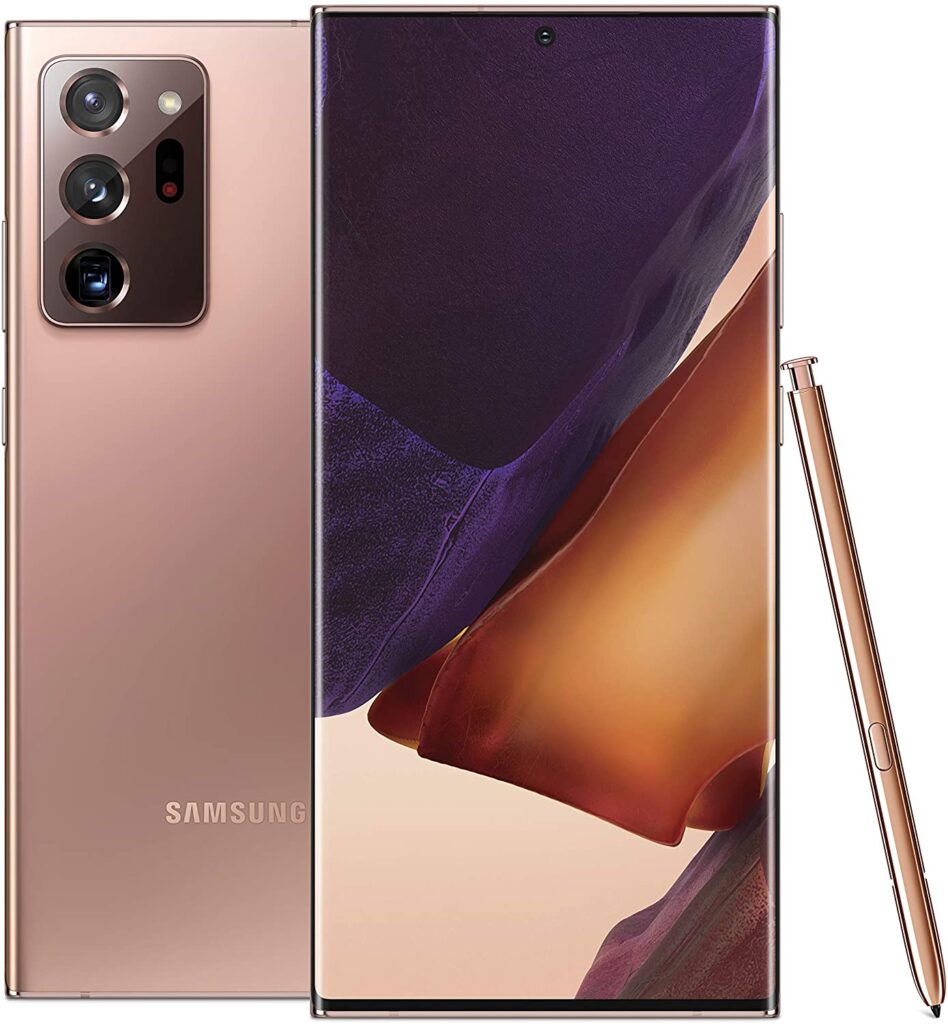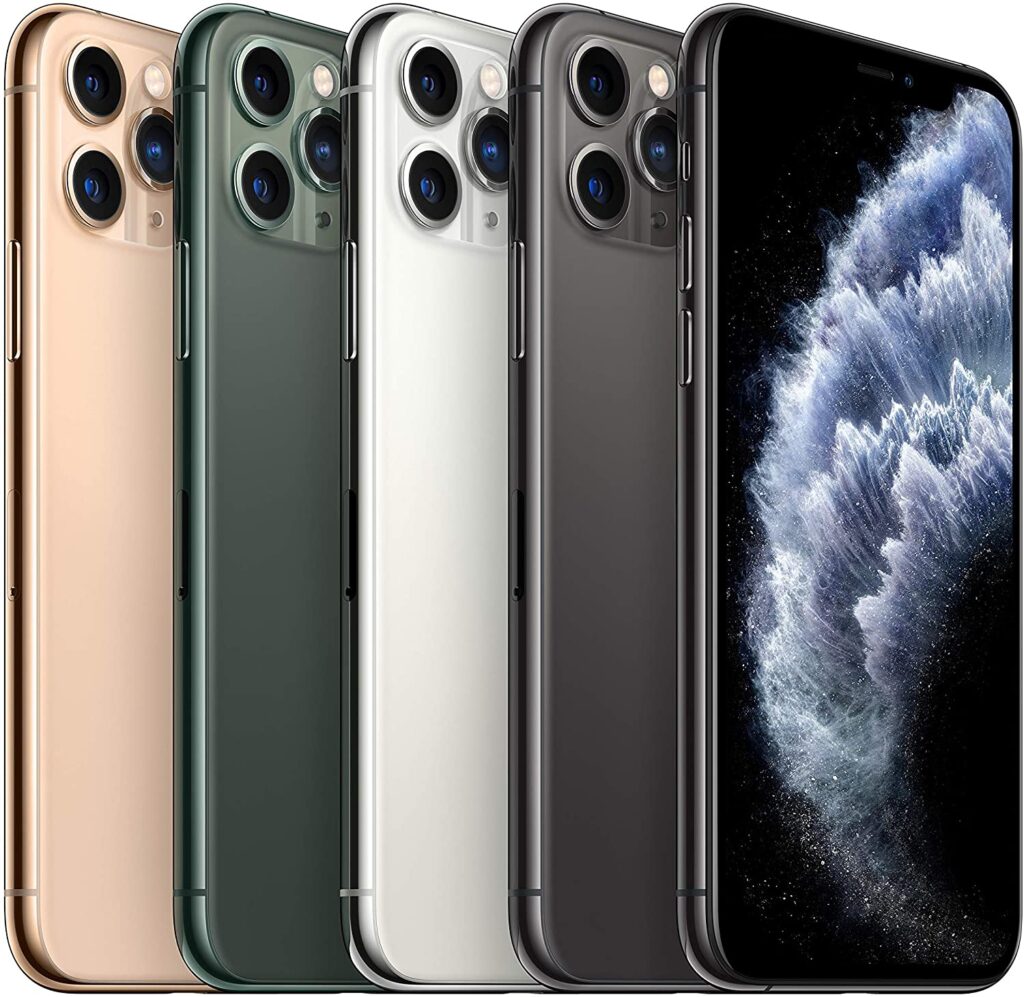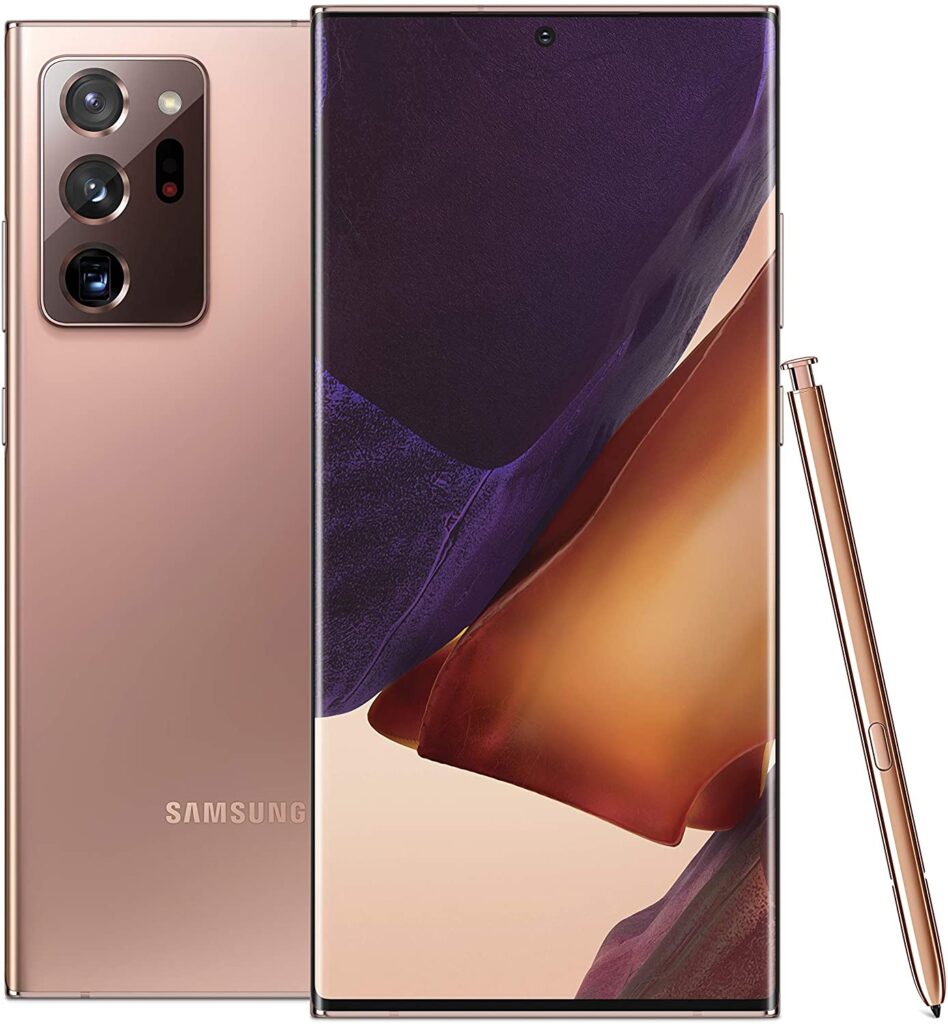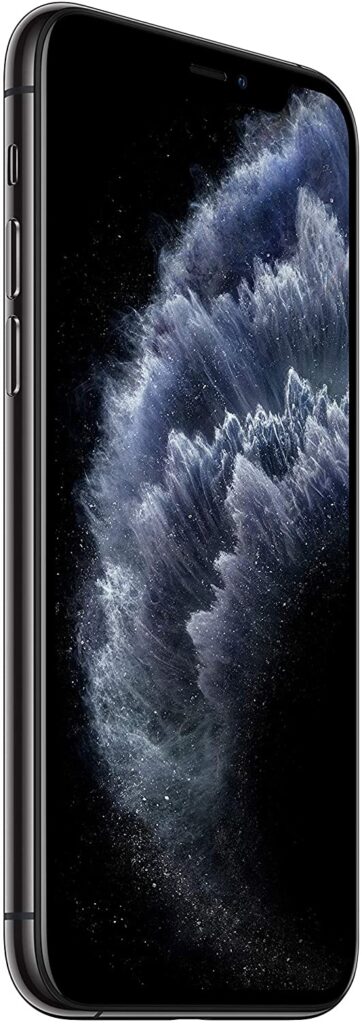The Galaxy Note 20 Ultra is a high-end Samsung mobile phone considered one of the main rivals in the premium Apple iPhone 11 Pro market. The two smartphones have advanced features such as a triple camera and high-resolution OLED display, but there are differences too, such as the S-Pen in the Galaxy and the high-performance promise of the A13 processor in the apple company’s phone. Check out the differences and similarities in the specifications of Galaxy Note 20 Ultra and iPhone 11 Pro below.
Galaxy Note 20 Ultra vs Apple iPhone 11 Pro
| Specifications | Galaxy Note 20 Ultra | iPhone 11 Pro |
|---|---|---|
| Launch | September 2020 | October 2019 |
| Current price | from $1,299 | from $1,000 |
| Screen | 6.9 inches | 5.8 inches |
| Screen resolution | 3088 x 1440 pixels | 2436 x 1125 pixels |
| Processor | Exynos 990 (octa-core up to 2.73 GHz) | A13 Bionic (hexa-core up to 2.65 GHz) |
| RAM | 8 GB | 4 GB |
| Storage | 256 GB | 64, 256, or 512 GB |
| Memory card | yes, microSD up to 1 TB | no support |
| Main camera | triple camera: 108, 12, and 12 MP | triple camera: 12, 12, and 12 MP |
| Front Camera | 10 MP | 12 MP |
| Operating system | Android 10 with One UI 2.5 | iOS 13 |
| Battery | 4,500 mAh | 3,046 mAh |
| Dimensions and weight | 164.8 x 77.2 x 8.1 mm; 208 g | 144 x 71.4 x 8.1 mm; 188 g |
| Colors | black or bronze | space gray, silver, golden, or dark green |
Screen and Design

In terms of display, the most striking difference between the two phones is in the dimensions, as the Galaxy Note 20 Ultra is larger, with a 6.9-inch screen compared to the iPhone 11 Pro’s 5.8 screen. In terms of resolution, the numbers are quite different – 3088 x 1440 for Samsung and 2436 x 1152 for iPhone – but the reality is that the user experience should be similar on both models, as the pixel density is similar between the two: 496 pixels per inch (PPI) for the Note 20 Ultra and 458 PPI for the iPhone.
The similarities also appear in the screen technology used by the two brands, which originates in OLED. Samsung uses the Dynamic AMOLED 2X screen on the Galaxy Note 20 Ultra. The display supports HDR10+ content and supports up to 120 Hz refresh rate modes.
On the iPhone, the OLED screen is called Super Retina XDR. It is restricted to a 60 Hz refresh rate, supporting HDR10 and Dolby Vision high color depth modes.
In terms of design, the iPhone 11 Pro repeats the look of the iPhone X, offering a screen cut with a notch at the top of the screen. Galaxy Note 20 Ultra, on the other hand, has straighter edges and a more minimalist look, marked mainly by the front camera centered in a hole in the screen which is more discreet than the iPhone cutout.
In color, Note 20 Ultra has versions in white, black, or bronze. The iPhone appears in space grey, white, gold, and dark green. Both have IP68 certification which guarantees resistance against water and dust.
Camera

Both devices feature a triple-camera system. On Samsung’s side, Note 20 Ultra comes with a 108 megapixels module, coupled with a wide f/1.8 focal-aperture lens; a second 12 MP camera that works as a telephoto lens with f/3.0 periscope lens and 5x optical zoom, and a third unit, also with 12 MP resolution, that uses an ultra-wide f/2.2 lens.
In the Apple phone, the three sensors are 12 MP. One of them uses a wide f/1.8 lens, another is a telephoto lens of f/2.0 and a third one acts as an ultra-wide f/2.4 camera. Just like the Samsung model, there is optical image stabilization for videos and photos.
In terms of features, Samsung has a difference: the video recording is in 8K resolution, while the iPhone is limited to 4K. Moreover, both devices offer advanced photography modes, with image enhancement techniques via artificial intelligence processing, and support for popular features such as portrait mode.
Finally, there are still cameras for selfies on both phones. In Galaxy, the sensor is 10 MP (f/2.2), while on the iPhone the component is 12 MP (f/2.2).
Performance and Storage

From a hardware point of view, the two top models are attractive. In Apple’s case, the processor is an A13 Bionic, designed by Apple itself, which offers six processing cores capable of reaching a speed of up to 2.65 GHz. On Samsung’s phone, the national option comes with the snapdragon 865+, octa-core Samsung up to 2.73 GHz.
Note 20 Ultra comes with 8 GB of RAM, twice the amount available on Apple’s phone. The importance of RAM is felt in the phone’s ability to keep sessions saved from apps that the user leaves open in the background.
From a storage point of view, the iPhone 11 Pro can be found on the market in versions with 64, 256, and 512 GB and also offers microSD memory card input, a feature that is not present in the Apple product.
Battery
In terms of battery, Note 20 Ultra comes with a 4,500 mAh gross capacity component. With the screen updating to 120 Hz, the battery will be sufficient for 10 hours of use, which indicates that there is no need to charge for an entire day. However, it guarantees 15 hours of autonomy on the phone.
Apple does not officially disclose the gross battery capacity of iPhones: it is known through disassembly that the phone comes with a 3,046 mAh unit. In Apple’s accounts, it should offer autonomy for 18 hours. Both phones are compatible with fast, wireless charging.
Operating System and Additional Features

Both smartphones offer distinct user experiences because they run different operating systems. In Galaxy Note 20 Ultra, the consumer finds Android 10 with Samsung’s own One UI 2.5 interface. The company promises three years of system upgrades for Note 20 Ultra.
On the iPhone 11 Pro, the factory operating system is iOS 13, but already it can be updated to the 14 edition of the platform. Besides receiving updates faster than the rival, the Apple phone tends to spend several years receiving new versions.
Regarding connectivity, both devices are well equipped: the consumer can find fifth-generation Bluetooth, Wi-Fi 6 (802.11ax), and NFC in both. Those who prefer a cabled headset will be disappointed since neither has a headphone output.
Another difference between the two is that Note 20 Ultra comes with the S-Pen electronic pen that guarantees the device a set of tools and forms of interaction that are not possible on the iPhone.
Biometrics also differ greatly between the two phones. Note 20 Ultra has an ultrasonic digital reader under the screen. On Apple’s side, the iPhone 11 Pro comes with Face ID technology, which consists of a very accurate facial recognition system.
Price and Availability
Galaxy Note 20 Ultra was officially launched by Samsung in September, but it is already possible to find the device at $1,299.99. The iPhone 11 Pro is available for $1,000.
- Buy Galaxy Note 20 Ultra
- Buy iPhone 11 Pro
This post may contain affiliate links, which means that I may receive a commission if you make a purchase using these links. As an Amazon Associate, I earn from qualifying purchases.

